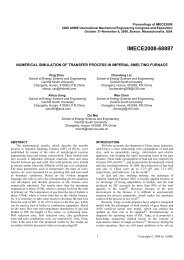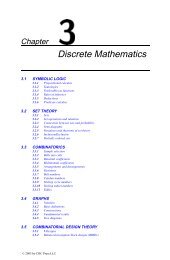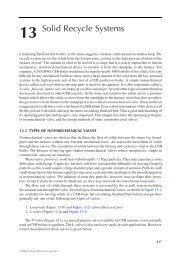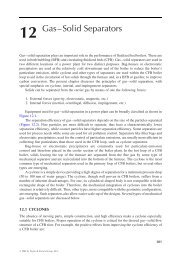Chapter 4: Geometry
Chapter 4: Geometry
Chapter 4: Geometry
Create successful ePaper yourself
Turn your PDF publications into a flip-book with our unique Google optimized e-Paper software.
and the positive polar axis, and the angle (azimuth) between the initial ray and the<br />
projection of ÇÈ to the equatorial plane. See Figure 4.32. As in the case of polar<br />
and cylindrical coordinates, is only defined up to multiples of ¿¼ Æ , and likewise .<br />
Usually is assigned a value between ¼ and ½¼ Æ , but values of between ½¼ Æ and<br />
¿¼ Æ can also be used; the triples ´ µ and ´ ¿¼ Æ ½¼ Æ · µ represent the<br />
same point. Similarly, one can extend to negative values; the triples ´ µ and<br />
´ ½¼ Æ ½¼ Æ · µ represent the same point.<br />
FIGURE 4.32<br />
A set of spherical coordinates for È is ´ µ ´½¼ ¼ Æ ¿¼ Æ µ.<br />
<br />
<br />
È<br />
<br />
FIGURE 4.33<br />
Standard relations between Cartesian, cylindrical, and spherical coordinate systems. The<br />
origin is the same for all three. The positive Þ-axes of the Cartesian and cylindrical systems<br />
coincide with the positive polar axis of the spherical system. The initial rays of the cylindrical<br />
and spherical systems coincide with the positive Ü-axis of the Cartesian system, and the rays<br />
¼ Æ coincide with the positive Ý-axis.<br />
Þ<br />
<br />
<br />
È<br />
Ü<br />
Ý<br />
Ö<br />
<br />
© 2003 by CRC Press LLC










